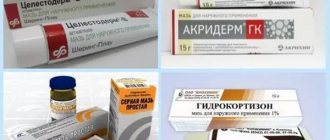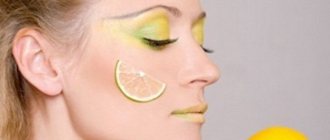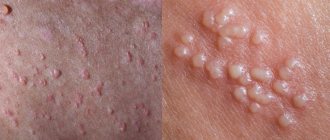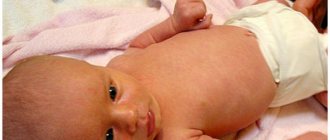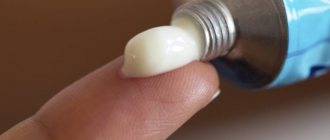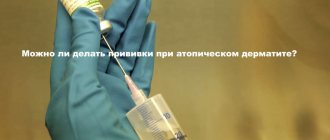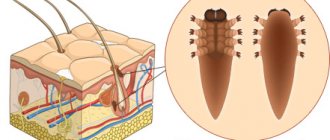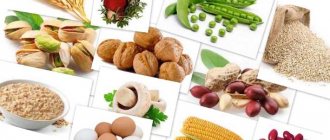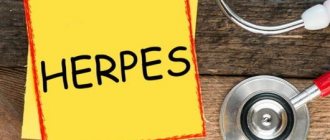Seborrheic dermatitis of the face or scalp is one of the most common skin diseases. When the first signs of the disease appear, you must consult a dermatologist who will prescribe appropriate treatment. Please note that there is no question of any self-medication for seborrhea. You can only aggravate the situation and cause significant harm to your health.
When fighting the disease, not only medications are used, but also specialized nutrition. A diet for seborrheic dermatitis involves both basic principles (such as avoiding alcohol and an indicative menu for each day) and its own characteristics. The list of products acceptable for consumption and a sample menu for the patient should be compiled only by a specialist, taking into account the individual characteristics of the body and the stage of the disease. We will look at the basic principles of the diet for seborrheic dermatitis in adults, and also consider an approximate menu that a doctor may prescribe.
A few words about the disease
A skin disease called “seborrhea” (the accented second letter “e”) denotes a deteriorated state of skin health, which is recorded by doctors as painful and causing a lot of anxiety to the patient. The term for the disease comes from the Latin word - “sebum”, which means “fat”, and also from the Greek - “ρεω”, meaning “flow”, “flow”, “discharge”. It turns out that seborrheic skin disorder is a dysfunction of the skin tissues and sebaceous glands, which is characterized by abundant sebum secretions.
The main causes of the disorder are nervous overstrain and disorders of the neuroendocrine regulatory functions of the sebaceous glands located in the skin. To make the course of therapy more effective, doctors prescribe a special diet for seborrheic dermatitis. According to statistics, about 45% of cases of dermatological disorders are caused by this type of dermatitis. At the same time, an abundance of oily skin is observed in 15% of patients who are women aged 30-45 years, 10% - men of approximately the same age.
ADDITIONAL INFORMATION: There are three key types of seborrhea: oily, dry and mixed type. This suggests that dermatitis of this type can also be caused by deviations in the functioning of the sebaceous glands in the opposite direction - a lack of sebum secretion is normal.
Why is diet so important for seborrheic dermatitis?
During daily nutrition, each of our dishes, entering the body, goes through its own path and processing there. Food is broken down into particles, some of which are absorbed by the body, benefiting it and enriching it, activating the work of different systems, and some enter the excretory system. Here it is very important to pay attention to the food that the patient is used to eating, because a set of sweat glands is one of the elements of the excretory system of the whole body. It turns out that some types of products can activate the development of fungi, bacteria and other pathogens in the body. Poor nutrition can not only affect the chemical component of sweat, but also the inclusion of microelements in it that irritate the skin, leading it to a painful state.
Thanks to a diet for dermatitis and seborrheic dermatitis, you can completely calmly and gently cleanse your intestines of unwanted accumulations. And where the intestines and stomach are clean, sweat will not have an unpleasant odor or caustic components, which often lead to itching and disorder of the epidermis. The most dangerous for the patient, as well as for a healthy person, are considered to be canned food, food coloring, baking powder, synthetic organics, sweeteners, taste enhancers and other food components that are artificial or pathogenic in origin. Unnatural foods can aggravate the patient's condition when he starts taking medications against seborrhea due to the formation of various chemical reactions.
NOTE! When you change food products, a person’s body odor even changes! The more toxic substances consumed, or products containing elements of decaying cells, the more unpleasant the person smells.
Cooking tips
It is important to understand that even healthy food can be harmful to health if not processed correctly. For this reason, the following recommendations must be followed:
- Do not fry foods during the treatment period. This can adversely affect the functioning of the gastrointestinal tract; in addition, fried foods contain carcinogens that increase the likelihood of cancer.
- Food must be boiled, stewed or steamed. In this case, the maximum amount of nutrients is retained in the products.
- Before placing dishes in the oven, they must be wrapped in foil or a special bag. This will improve intestinal motility and make food healthier.
- If you have seborrhea, you should regularly consume dishes based on gelatin or agar-agar - jellied fish or fruit jelly.
Attention! Proper nutrition reduces the load on the liver, which is of great importance in the treatment of not only dermatitis, but also other skin diseases.
Specific nutrition for seborrheic dermatitis
Alternative nutrition should restore the body's water balance, nourish it, give it energy, cleanse it and even protect it from harmful influences. Before restricting the patient and assigning him a menu, they usually identify those foods and dishes that cannot be eaten, as well as those that can be consumed. It doesn’t matter what diet is prescribed, a diet for seborrheic dermatitis on the face or on the scalp among the hair, throughout the entire course of treatment you will have to be patient and abstain from a number of foods. In addition, the patient may need to eat something that he is not at all used to or does not like.
What can you eat during treatment for seborrhea?
To simplify the task as much as possible when creating a diet, it is enough to observe the components of the dishes and strictly adhere to eating them. By not allowing yourself too much during the course of therapy, it will be easier for the patient to free himself from the disease. Allowed foods during meals for seborrheic dermatitis of the scalp or face are as follows:
- Dietary meat products.
- Vegetable dishes (not fried!). These include: pumpkin (the flesh should not be too bright);
- white cabbage, cauliflower and, of course, broccoli;
- zucchini with squash;
- asparagus;
- sea cabbage (only without spices);
- everything else, but without fanaticism, within reasonable limits.
In addition to dietary nutrition, you should also regularly take a vitamin complex throughout the entire period of treatment in order to maximize the stability of the immune system and strengthen the body. You just need to first consult with a doctor about which vitamins to take, what production and which complex is most suitable for the patient.
FOR REFERENCE: You cannot use all products as a mono-diet, as this will significantly deplete the body of useful microelements. The diet should be varied, and therefore all acceptable foods are taken in small quantities every day.
What is strictly forbidden to eat if you have seborrhea?
To make therapy easier when seborrheic dermatitis is eliminated, it is necessary to exclude a number of foods and drinks from the patient’s diet. The most dangerous products are the following options:
- Carbohydrates that are quickly absorbed. These include: baking;
- candies;
- jam;
- cakes;
- marshmallows;
- sweet drinks and so on.
- citruses;
According to the observations of doctors, the most difficult thing for people with seborrheic dermatitis is to adjust their diet so as to give up sweets and preservatives (any canned foods). Potatoes, semolina, jams, marmalade, pasta and other flour products - all of this is also classified as easily digestible carbohydrates, the excess of which in the body is not very beneficial.
IMPORTANT! Everyone knows that watermelon is usually called a berry, not a fruit. Nowadays, watermelons are grown with various growth stimulants, which are not easily accepted by the human body. Therefore, watermelons of questionable harvest should always be treated with caution.
What can't you eat?
In the process of treating seborrhea, you should avoid the following products:
- fast food;
- alcoholic drinks;
- smoked meats;
- fried foods;
- fatty and spicy foods;
- marinades;
- crackers, chips and other snacks;
- quickly digestible simple carbohydrates (pasta made from soft wheat, sugar, baked goods made from premium flour, etc.).
In some cases, the disease occurs due to allergies to certain foods. If you suspect an allergy, you should remove the following foods from your diet:
- strawberries, watermelon, jam;
- candies, cakes, marshmallows and chocolate;
- coffee;
- cocoa;
- soda, packaged juices and other sweet drinks;
- mushrooms;
- citrus fruits: oranges, lemons, etc.
- bee products, including honey;
- caviar
By eliminating the consumption of harmful and potentially dangerous foods, you can significantly speed up your recovery.
Approximate menu for one day and 5 rules for its preparation
If you choose your own therapeutic diet for every day, then you need to proceed not so much from taste preferences, but from the healing properties of the components in the dishes. To begin with, before presenting the approximate daily diet of a sick person, it is necessary to balance the nutrition for seborrheic dermatitis, whether on the face or on the head, from permitted foods. There are 5 basic rules for this:
- All meat and fish dishes should be eaten 2 times a week so as not to overload the intestines and liver.
- Don’t eat the same foods, you need to make a variety of dishes every day.
- Gelatin and agar-agar can be used for aspic. In general, exclude any other synthetics and artificial substances. For example, do not buy powdered milk, but only cow or goat milk.
- Full-fat natural milk should be diluted with water when cooking or boiling.
- The regimen should be small and frequent, so as not to overload the gastrointestinal tract and other body systems.
ADDITIONAL INFORMATION: It is better not to get carried away with dietary supplements for this period, otherwise you can aggravate the allergy or cause another side effect.
The menu for one day may include the following dishes:
- 1. For breakfast: low-fat cottage cheese (0% fat);
- cottage cheese is diluted with kefir;
- unsweetened yogurt can replace kefir;
- 1 glass of herbal calming tea.
- pear or apple - only green;
- lean fish or boiled meat;
- low-fat fermented baked milk – 200 ml;
- boiled meat or fish in small quantities;
IMPORTANT! For any patient who needs a diet for seborrheic dermatitis on the head and face, the doctor will always set the task of keeping a diary of observations of their diet and the body’s reaction to certain foods.
Strict adherence to a diet for a disease such as seborrheic dermatitis is the most important part of the entire treatment method, which in itself can already bring significant relief to the patient. When the patient adheres to the diet throughout the course of therapy, he will recover very quickly. After all, the impact will be on the sore not only from the outside with the help of injections, creams and ointments, but also by cleaning from the inside. After the onset of remission, or the extinction of the symptoms of the disease, whether to continue, adhere to the diet or not, it all depends on the doctor, as he recommends to the patient.
